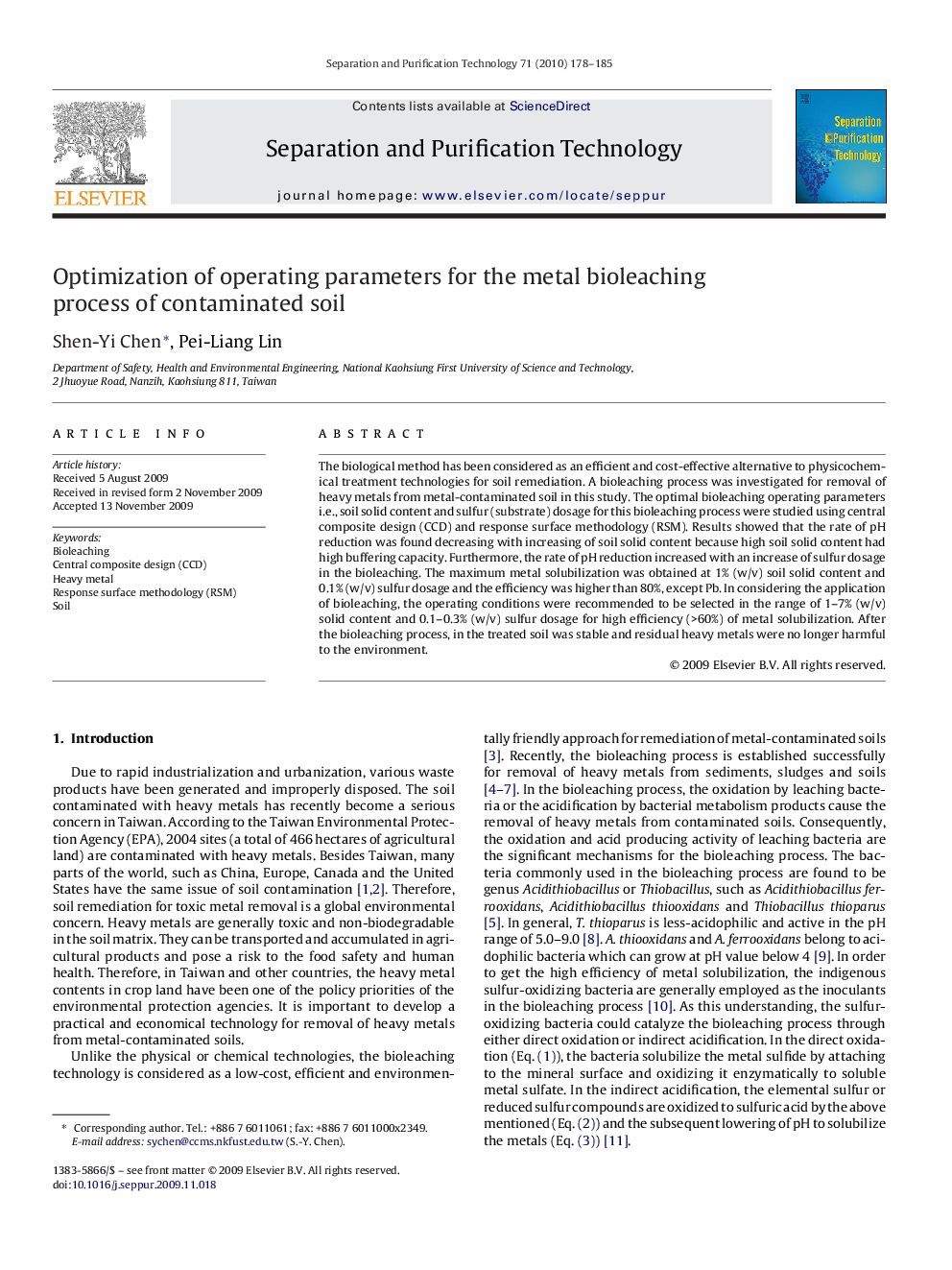| Article ID | Journal | Published Year | Pages | File Type |
|---|---|---|---|---|
| 643022 | Separation and Purification Technology | 2010 | 8 Pages |
The biological method has been considered as an efficient and cost-effective alternative to physicochemical treatment technologies for soil remediation. A bioleaching process was investigated for removal of heavy metals from metal-contaminated soil in this study. The optimal bioleaching operating parameters i.e., soil solid content and sulfur (substrate) dosage for this bioleaching process were studied using central composite design (CCD) and response surface methodology (RSM). Results showed that the rate of pH reduction was found decreasing with increasing of soil solid content because high soil solid content had high buffering capacity. Furthermore, the rate of pH reduction increased with an increase of sulfur dosage in the bioleaching. The maximum metal solubilization was obtained at 1% (w/v) soil solid content and 0.1% (w/v) sulfur dosage and the efficiency was higher than 80%, except Pb. In considering the application of bioleaching, the operating conditions were recommended to be selected in the range of 1–7% (w/v) solid content and 0.1–0.3% (w/v) sulfur dosage for high efficiency (>60%) of metal solubilization. After the bioleaching process, in the treated soil was stable and residual heavy metals were no longer harmful to the environment.
